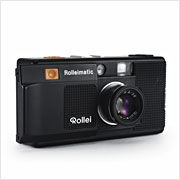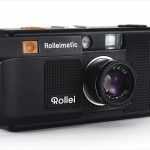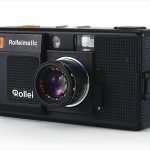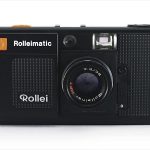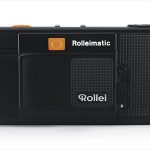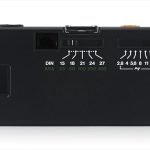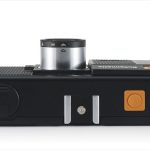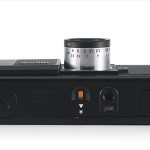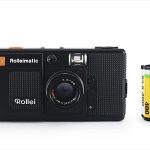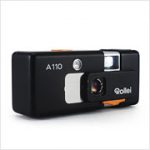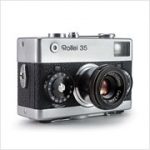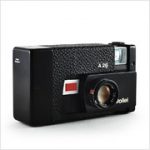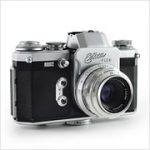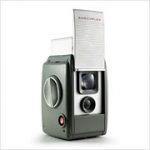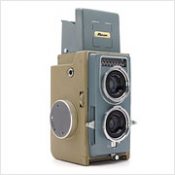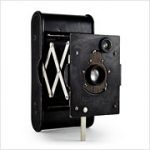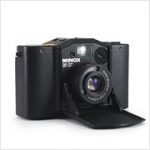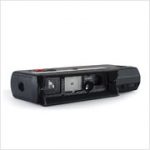Rollei Rolleimatic Specifications
| Manufacturer: | Rollei-Werke Franke & Heidecke |
| Origin: | West Germany |
| (modern day Germany) | |
| Made in: | Singapore |
| Introduced: | 1980 |
| Type: | Viewfinder |
| Format: | 135 Film |
| Dimensions: | 11.7 x 6 x 3.5 cm (closed) |
| 12.8 x 6 x 4.8 cm (open) |
Rollei Rolleimatic Overview
The Rollei Rolleimatic was a compact 35mm viewfinder camera introduced by Rollei in 1980. It has the distinction of being the last Rollei model created by legendary designer Heinz Waaske (whose other works include the extraordinary Rollei 35 and the diminutive Edixa 16) and also, unfortunately, the very last camera that Rollei debuted before the ailing company finally declared bankruptcy. Because of this unfortunate timing, the Rolleimatic did not undergo the same amount of testing that benefitted its forebears and, as a result, is not quite as user-friendly or intuitive as it could have been.
Much like the Rollei A26 before it, the Rolleimatic uses clever mechanics to keep the camera compact. To get the camera ready for action, the front cover must first slide to the side to reveal the Rolleinar 38mm f/2.8 lens and then pivot on a seesaw hinge to extend it. Once extended, the lens will remain in this position while the panel can now rock back and forth to cock the shutter between photographs. The ring on the front of the lens is used to manually adjust the focus with zones visible on the top and distance markings on the bottom. To retract the lens, the orange button next to the “Rolleimatic” badge needs to be depressed as the panel swivels. Once the lens is pulled back into the body, the cover can then move back over it.
True to its name, the Rolleimatic doesn’t offer much in terms of manual controls. Besides the lens and shutter cocking mechanism, the only other control on the front is the self-timer switch with a little red countdown light. The top plate is home to the retractable film rewinding knob, hot shoe, and orange shutter button. A film speed indicator and aperture control is found on the back, the film door latch is on the user’s left hand side of the camera while a wrist strap mounting point is on the right. The camera’s bottom is where you’ll find the tripod socket, frame counter window, film rewind release button, and battery compartment.
I’m a big fan of Rollei’s clever engineering and so after getting the A26 and the A110, the Rolleimatic was next on the list for me. Although not quite as refined or easy to use as its predecessors (the lens flap seems a bit fragile, the film door latch is disappointingly flimsy, and the take-up spool is missing a much-needed slot for the film leader), the Rolleimatic has its own charm, something that is not easy to come by when it comes to cameras from the 1980s.
Find your very own Rollei Rolleimatic on eBay.
McKeown, James M. and Joan C. McKeown’s Price Guide to Antique and Classic Cameras, 2001-2002. (Grantsburg, WI, USA: Centennial Photo Service, 2001), p 587.
“Rollei > Rolleimatic,” Wikipedia, https://en.wikipedia.org/wiki/Rollei#Rolleimatic
“Heinz Waaske,” Wikipedia, https://en.wikipedia.org/wiki/Heinz_Waaske
